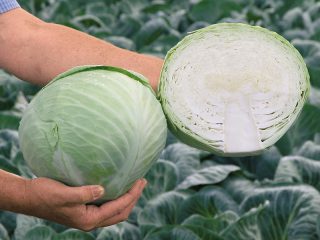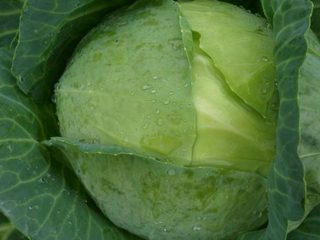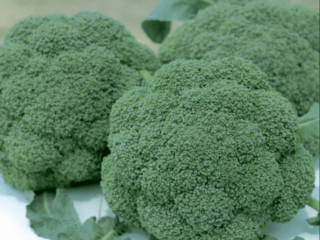Content
Most gardeners grow late varieties of cabbage for long-term storage, since this vegetable is distinguished by its versatility. However, when choosing species, many of them have some doubts about the keeping quality of the fruits, since it is not always possible to preserve the heads of cabbage until spring. Therefore, it is necessary to consider the most common varieties of late cabbage, which have already been time-tested and have recently appeared on the market and are popular among gardeners.

The taste of late types of vegetables improves during storage.
How to choose cabbage for storage
Only mid-late and late varieties and vegetable hybrids are suitable for long-term storage. They are characterized by a long growing season from 120 to 170 days. Therefore, they must be planted in a timely manner so that the plants have time to form tight heads of cabbage before the arrival of frost.
When choosing a variety, you need to pay attention to its susceptibility to possible temperature changes, as well as its resistance to fruit cracking.Since the harvest can last as long as possible only if the integrity of the fruit is preserved.
It is recommended to store only the tightest, heavy heads, whose leaves fit tightly to the head of cabbage. Indeed, in this case, the probability of air getting between them is minimal, which means that such cabbage can last not only until spring, but also until the new harvest. Fruit harvesting should be carried out after the first frost, since in this case the heads of cabbage stop breathing, protecting themselves from external negative factors.
The best varieties of late cabbage for storage with photos and descriptions
Every year new varieties and hybrids of late cabbage appear on the market, which is due to the high demand for the crop. And therefore, it is difficult for a novice gardener to understand the wide range of products presented. It is worth studying the names of all varieties of late cabbage and their characteristics, which, judging by reviews, are considered the best for long-term storage. This will allow you to choose the most optimal option in each specific case.
Aggressor F1
Dutch hybrid is recommended for cultivation in the central and northern regions of the country. The duration of the growing season until technical maturity is 115-125 days. Forms heads of cabbage weighing 3-5 kg. The leaves are medium sized, gray-green, slightly wavy along the edges. Covered with a waxy coating. The socket is raised. The heads of cabbage have a snow-white hue when cut.
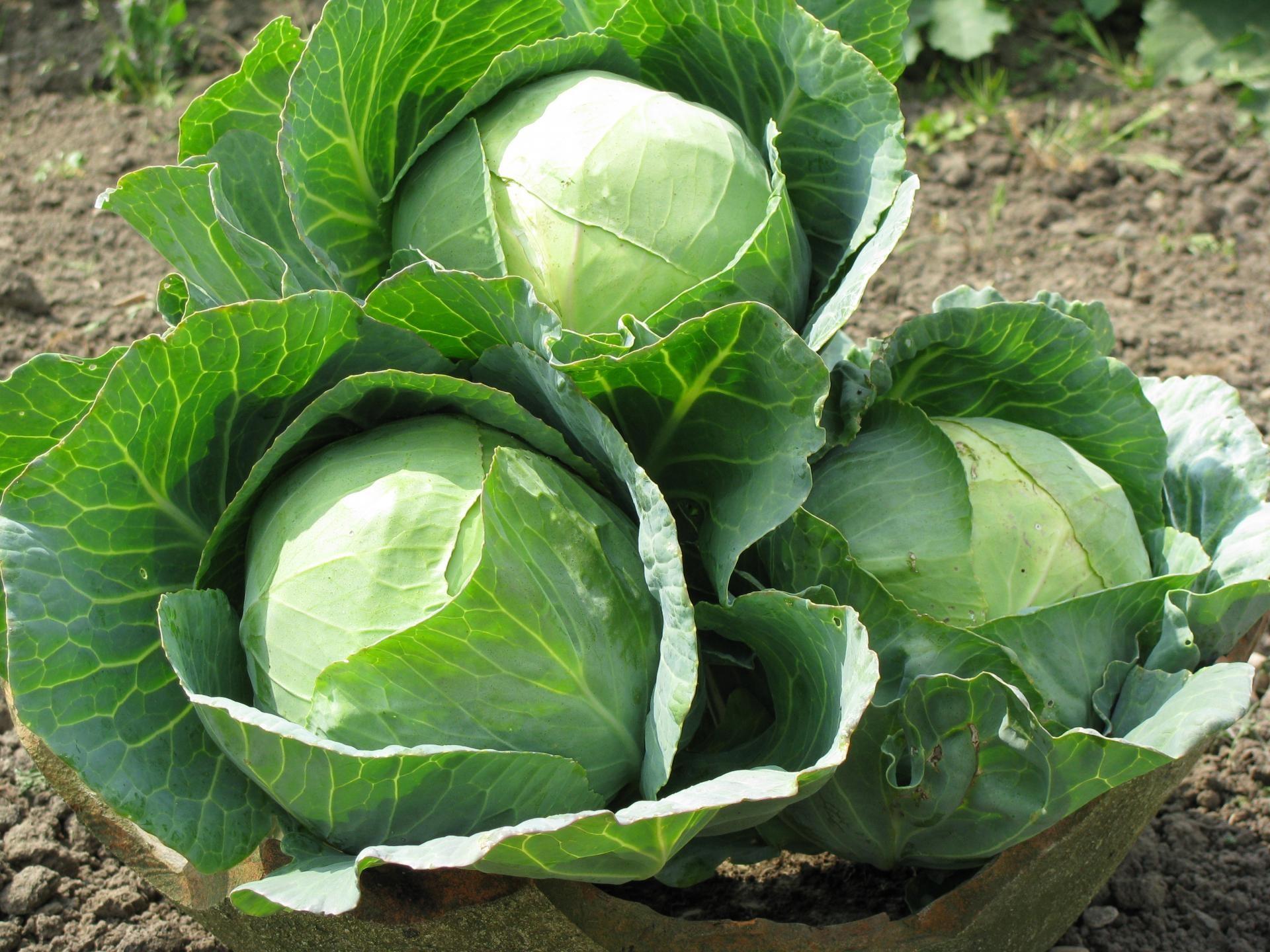
Cabbage Aggressor F1 has a medium-sized stalk about 16 cm
The productivity of Aggressor F1 is 8 kg per 1 sq. m area. The hybrid is characterized by resistance to diseases and pests.Capable of producing a good harvest even in unfavorable seasons for the crop. The shelf life of the crop is five months.
Amager 611
A late-ripening variety, time-tested. It is characterized by a raised rosette of leaves, the diameter of which is 70-80 cm. It forms flat-round, dense heads weighing 2.6-3.6 kg. The leaves are gray-green, covered with a thick light coating. The stalk is medium, up to 15 cm long.
In late cabbage Amager 611, the duration of fruit ripening to technical maturity is 117-149 days, depending on the growing region. The variety tolerates transportation well and is stored for more than five months. The yield level is 6-7 kg per 1 sq. m. The variety is suitable for processing.

Amager 611 is characterized by increased resistance to cracking
Important! Late cabbage can withstand frosts down to -4 °C without loss of commercial qualities.
Snow White
High-yielding late-ripening variety of white cabbage. A distinctive feature is the snow-white cross-section of the fruit and increased juiciness of the leaves, so the Snow White variety is ideal for pickling and pickling.
The rosette is raised, with a diameter of more than 70 cm. The heads of late Snow White cabbage are leveled, round, weighing 2.5-3.9 kg. The leaves are light green with a bluish tint. The yield of the variety directly depends on care; it can reach 10 kg per 1 meter of area. The disadvantage of the variety is the average level of disease resistance.

Snow White has a high content of vitamins, sugars and dry substances
Valentina F1
A late-ripening hybrid with a long growing season of 140-170 days, therefore it needs early planting. The heads of cabbage are obovate in shape, medium in size, weighing 3.5-4 kg. The leaves are light green, slightly wavy, and have an intense waxy coating.The shelf life of the crop is more than eight months.
Late cabbage Valentina F1 has no equal in disease resistance. The yield of the hybrid is 8 kg per 1 sq. m. The variety is suitable for fermentation and pickling.

The fruit taste of Valentina F1 cabbage improves after two months of storage
Wintering 1474
The variety is excellent for storage, which is why it got its name. Its fruits do not lose freshness until June. The rosette of Zimovka 1474 is larger than average, up to 90 cm in diameter, semi-spreading. The lower plates are located horizontally, their edges are lowered.
The heads of the variety are round-flat, dense, weighing 2-3.6 kg. Wintering 1474 is resistant to low temperatures, gray mold and spot necrosis. The harvest can be stored until June, and the amount of waste does not exceed 10%. The yield of this species is 4.5-5.2 kg per 1 sq. m.

The yield of marketable products from late cabbage Zimovka 1474 is 93%
Kolobok
A late hybrid, the duration of fruit ripening is 145-155 days. The rosette is raised, medium in size, about 55 cm in diameter and 30-34 cm in height. The harvest is stored for more than six months.
Late Kolobok cabbage has large, dense heads of cabbage, weighing 4.5 kg. When cut, they have a snow-white tint, and outside are light green. Productivity reaches 8-10 kg per meter of area. The hybrid is slightly susceptible to white rot, bacteriosis, and fusarium.

Late cabbage Kolobok is distinguished by uniform ripening of fruits
Langedijker
This German variety of mid-late cabbage, which has the full name Langedeiker Decema, was bred a long time ago, but has not lost its relevance.The duration of its growing season is 5-5.5 months. The fruits are round-oval and characterized by increased density. The stalk is short, no more than 12 cm.
The weight of the heads of cabbage directly depends on care and varies from 2 to 4.4 kg. The rosette is low, with dark green leaves. When cut, the heads of cabbage have a light shade. The variety is valued for its high content of ascorbic acid and beta-carotene. It is resistant to mucous and vascular bacteriosis. Productivity is about 6 kg per 1 sq. m. Heads of cabbage are stored for more than five months.

Late Langedijker cabbage is suitable for private and industrial cultivation
Lennox F1
A Dutch hybrid of late cabbage, which is included in the State Register and recommended for cultivation in most regions of the country. The duration of ripening of its fruits to technical maturity is 5.5 months. The hybrid forms a powerful root system, so it easily tolerates drought.
The heads of cabbage are spherical, dense, small, weighing about 2.2 kg. The fruits contain large amounts of ascorbic acid. The hybrid has a high shelf life of up to seven months. Productivity per 1 sq. m is more than 10 kg.
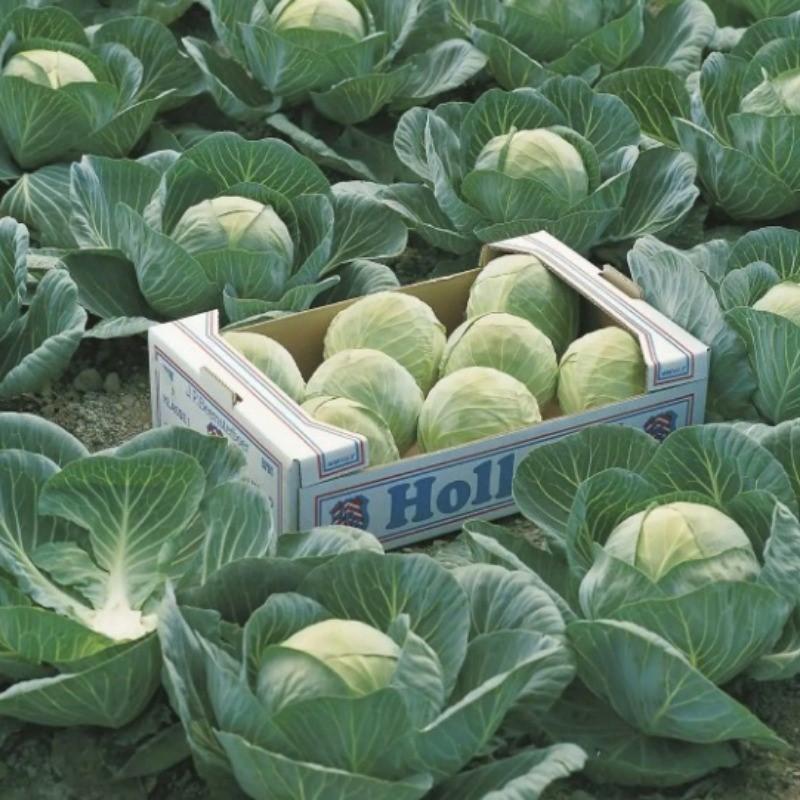
Lennox F1 is slightly susceptible to disease
Mom F1
This hybrid of late cabbage is included in the State Register. Shows high performance in the Volga region. It does not form particularly dense heads of cabbage, but they store well for up to six months. The growing season is 150-160 days. The rosette is raised, 50 cm in diameter.
The leaves of late cabbage Mama F1 are medium-sized, round, gray-green, covered with a thick coating. Their surface is slightly bubbly, the edges are smooth. The heads of cabbage are flattened and have a light green tint when cut. Their weight ranges from 2.5-2.7 kg. The yield of marketable fruits is more than 91%. The yield is 6.5 kg per 1 sq. m.

The fruits of the hybrid Mama F1 remain intact at high humidity
Mara
One of the best varieties of late white cabbage from Belarusian breeders. It has a long growing season of about 175 days, so planting cannot be delayed. The leaves of the Mara variety are dark green with a bluish tint, covered with a thick light coating.
The variety is distinguished by large fruits, the weight of which ranges from 4 to 4.5 kg. The heads of cabbage are dense, but juicy. They are stored well until May at a temperature of +3 ° C and a humidity of about 70%. The yield is 8-9 kg per 1 sq. m. The variety is ideal for fermentation and pickling.

Mara cabbage is immune to rot
Megaton F1
A late-ripening hybrid from Holland, which is most often chosen by gardeners. Its fruits ripen earlier than other types, in 135 days. Characterized by a spreading, powerful, squat rosette. The leaves are round, light green, large, concave with a pronounced central vein. The edges of the plates are slightly corrugated.
The cut fruits are white, dense, with a short stalk. Their average weight varies from 3.4 to 4.1 kg. Productivity is consistently high up to 12 kg per 1 sq. m. The duration of storage of fruits is more than six months. The taste is excellent. This type of cabbage is little susceptible to fusarium, clubroot, gray rot, and pests.

Hybrid Megaton F1 maintains good productivity even in unfavorable seasons
Moscow late
A time-tested late variety of white cabbage that is excellent for storage. Its growing season is 143-160 days.It is characterized by a spreading rosette, and therefore requires a more sparse planting compared to other species. The heads of cabbage are round, slightly flattened, white when cut, and juicy. The leaves are light green in color and covered with a waxy coating.
The average fruit weight is 3.5-4.5 kg, but individual specimens can weigh 6 kg. The yield is 10-12 kg per 1 sq. m. The variety is valued for its high content of sugars and vitamins and has an excellent taste. The shelf life of the crop is more than seven months.

Moscow late cabbage is not affected by clubroot
Orion F1
The hybrid shows high performance in the North Caucasus. The duration of ripening of its fruits is 165-170 days. The rosette is low, with vertically directed leaves, 65-68 cm in diameter. The fruits are elongated, dense, weighing 2.3 kg. When cut, they have a creamy-light color. The taste is good. The harvest is stored for more than six months, the mass fraction of waste does not exceed 15%.
The hybrid is characterized by a stable yield of 6-7 kg per 1 sq. m. Little susceptible to diseases and temperature changes.

Late cabbage Orion F1 is distinguished by its friendly yield of fruits
Sugarloaf
A mid-late variety, the growing season of which is 140-150 days. Forms a powerful spreading rosette, up to 80 cm in diameter and 40 cm in height. The leaves are large, round, light green. They have a wavy edge and are covered with an intense waxy coating.
The heads of late cabbage are round, even, and very dense. The fruits are stored until May. The weight of the heads of late cabbage Sugarloaf is 3-3.5 kg. The heads of cabbage are white and crisp when cut. The stalk is medium, no more than 14 cm.The variety has increased resistance to common crop diseases. The yield is 7-8 kg per meter of area.

Late cabbage Sugar loaf is suitable for pickling and pickling
Turkiz
A German variety that is popular among gardeners. The harvest ripens in 165-170 days from the moment of germination. The variety is characterized by resistance to cracking and fungal diseases. It forms a powerful root system, so it tolerates drought well.
The fruits of the Turkiz variety are of regular round shape, dense, weighing 2.5-3 kg. They do not lose their consumer properties for up to eight months. The yield is 8-10 kg per 1 sq. m. variety is valued for its high content of sugars and dry substances.

Late Turkiz cabbage is characterized by versatility of use
Kharkov winter
A well-known late variety, the fruits of which ripen in 140-150 days. The leaves are medium-sized, round or oval. They are dark green in color and covered with an intense waxy coating. The heads of cabbage are round, weighing 3.5-4.2 kg. Medium length stalk. The yield of the variety is 6-8.3 kg per 1 sq. m, but can reach 11 kg with proper care.
The shelf life of this late cabbage is more than six months. The variety is valued for its high, stable yield and is suitable for cultivation in all regions of the country.

Kharkov winter is not affected by point necrosis
Conclusion
All late varieties of cabbage for long-term storage, judging by reviews from gardeners, are characterized by good keeping quality. However, it is worth understanding that the quality of the crop directly depends on compliance with the rules of crop care. Otherwise, the storage duration will be much shorter than stated, since the plant will not be able to reach the required maturity.
Reviews of late varieties


